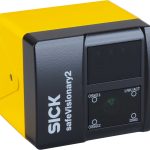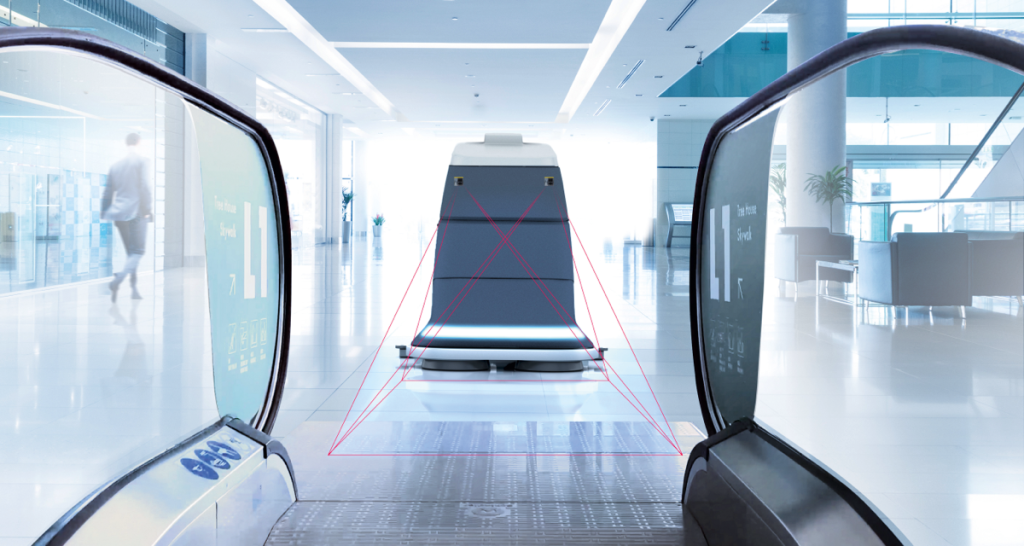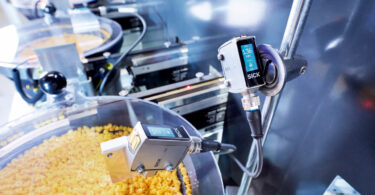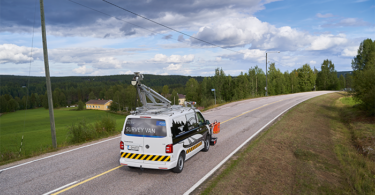The new safeVisionary2 is a compact 3D camera for increasing productivity and reimagining 3D safety for mobile robots
 Maintaining safety in production and logistics environments is traditionally accomplished using 2D LiDAR sensors to protect hazardous areas. While this method does work, what if there was a way to use 3D cameras for an enhanced level of safety? Introducing the safeVisionary2, the first 3D safety camera on the market.
Maintaining safety in production and logistics environments is traditionally accomplished using 2D LiDAR sensors to protect hazardous areas. While this method does work, what if there was a way to use 3D cameras for an enhanced level of safety? Introducing the safeVisionary2, the first 3D safety camera on the market.
The safeVisionary2 3D time-of-flight (ToF) camera is certified for Performance Level c. The addition of the third dimension enables a new level of safety that allows for autonomous and intelligent mobile robot navigation. With no moving parts in the body, the camera provides excellent shock and vibration resistance.
Based on the same ToF platform used by SICK’s Visionary-T Mini, the safeVisionary2 is suitable for a wide range of applications. It is very effective for use on autonomous mobile robot because it provides precise 3D measurement data for safe navigation. With actively modulated laser technology, it can also be used in environments with extraneous light.
Advanced protection and efficient automation of mobile robots
Mobile robots, from AGVs to AMRs, use LiDAR technology to intelligently navigate around a facility. The avoidance of collisions and a fast restart increases the availability of mobile robots. With safeVisionary2, obstacles above the scanning field level of a safety laser scanner are also reliably detected in the direction of travel, allowing for the avoidance of collisions. In contrast to 2D anti-collision solutions, safeVisionary2 can automatically restart in many cases. In addition, side protection safety is also increased during turning and pivoting maneuvers of the vehicle after loading and unloading processes. The 3D environmental information can also be used in mobile applications for precise localization and navigation of the vehicles, available via Gigabit Ethernet.

Increased safety with 3D vision for improved human-robot collaboration
In this application scenario, further use of the sensor data is particularly suitable, as the camera performs many tasks from detecting empty pallets to object localization and measurement. This combination of safety and automation reduces the implementation effort for additional components – users save costs and time.
More support for mobile service robots
If a mobile service robot is used in unstructured environments, such as a shopping mall, this requires a particularly careful risk assessment. Obstacles like stairs or ramps can pose potential crash risks for the robot. In addition to the evaluation of protection and warning fields for track protection, safeVisionary2 also enables cliff detection. The precise 3D measurement data offers real added value for contour-based navigation and other automation tasks.
The creation of a third dimension for robotic safety, allows SICK to create a wealth of new possibilities in mobile and stationary applications. safeVisionary2 can be configured easily, quickly, and cost-effectively via the intuitive SICK Safety Designer, which is already established on the market, and provides extensive diagnostic functions. With its comprehensive service and system approach, SICK succeeds in providing hardware, software, and service for mobile platforms from a single source – for more flexibility and variability in the industrial 3D safety world.
Want to learn how you can use the safeVisionary2 in your facility? Contact a SICK representative today!






